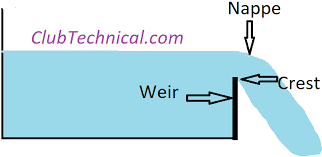Underwater Windmill : Working & Its Applications
Underwater Windmill : Working & Its Applications
Generally, windmills only produce mechanical power of their tasks like plumbing or granting of water. Windmills are connected to a generator for electricity generation. The first underwater windmill was invented by Charles F Brush to generate electric energy.
There are different kinds of renewable energy sources available like solar, tidal, wind, hydro & geothermal. Ocean energy refers to a range of technologies that use the ocean like wave energy converters, offshore wind, tidal or current, and OTEC (ocean thermal energy conversion).
What is Underwater Windmill?
Generally, windmills remove power from the energy of wind. Similarly, underwater windmills or tidal stream turbines extract energy from the ocean water flow. Windmill uses kinetic energy (KE) of the flowing water while wind blades utilize moving air.
As compared to a normal windmill, the working principle of the underwater windmill is similar. A set of blades will create electrical energy & changed from mechanical energy moved with the help of an aqueous flowing of water.
Tides are mainly used to push the water from slanting blades to make them turn. At different depths of the ocean has a different current. This kind of windmills includes slow revolution due to the significant amount of water strength on air. Windmills are arranged within an ocean and coated with slippery materials or Teflon.
Underwater Windmill Operation Principle
The essential parts of an underwater windmill include turbines, gearbox, generator, cables, and support. When water flows, the rotor rotates to make the generator turned ON. The gearbox is used to change the rotary speed of the rotor shaft to the preferred output speed of the shaft of the generator.
The generated electricity can be transmitted toward the land through the cables. The turbines can change kinetic hydro energy into power. Underwater windmill includes a number of blades that are arranged on a hub, a generator & a gearbox.
The effect of hydrodynamic for the water flow can cause the rotor to spin, therefore turning the generator where the rotor is allied through a gearbox. The gearbox is mainly used to change the rotating speed of the rotor shaft to the preferred output speed of the generator shaft. The electricity produced can be transmitted toward land using cables.
- In an underwater windmill, the following factors will affect the entire system
- Cavitation Avoidance or bubble formation
- Avoidance of marine growth buildup
- Corrosion resistance
Advantages
The advantages of an underwater windmill include the following.
- Less maintenance and gives more lifetime
- The underwater windmill uses Tidal energy and this is a clean & renewable energy source
- Decreases the dependence on fossil fuels
- It has less impact on the environmental impact
- Running cost is less
- Tidal energy is totally renewable & it doesn’t generate emission
- It is placed under the water
- No fuel cost
- It is an emission-free power source
- It replaces other electricity-generating techniques which depend on fossil fuel burning like coal, so the greenhouse effect can be caused.
- Tidal energy provides fewer benefits because transportation corridors can be built on tidal generators.
- These can support water mains, roadways, rail lines, otherwise communication lines, which again can balance
- The expenditure of installing the tidal device.
- Not like renewable resources, the ebb & the ocean tides flow are completely conventional & reliable. They don’t affect external forces like the weather.
- This kind of energy will decrease the dependence on oil reserves from different countries.
- Once the tides go out gravity sucks the water through the turbines to generate electricity
- Windmills’ predictability can make it simple to incorporate into accessible power grids.
Disadvantages
The disadvantages of underwater windmills include the following.
- The initial cost is very high
- Installation underwater is very difficult
- To avoid the corrosion of the blade, it must be coated
- Damages habitat up to 500m away
- Difficult to maintain
Applications
The applications of underwater windmills include the following.
- Windmills are used to remove power from the energy of wind.
- These are used to remove energy from the flow of water in oceans and these are also known as Tidal stream turbines.




Comments
Post a Comment